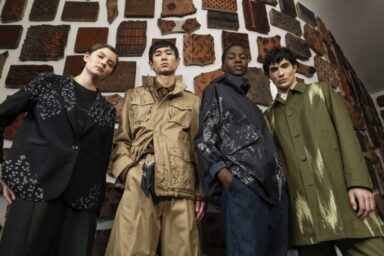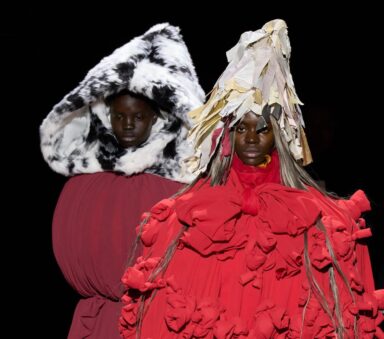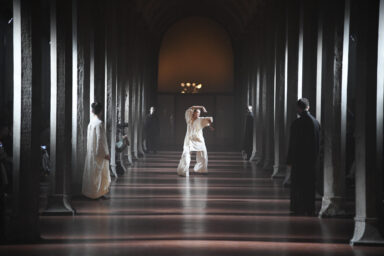The 101st edition on Pitti Uomo confirms that the Florentine fair might be a role player in the fashion system, but it urges a renovation
Text by: Gianmarco Gronchi
Walking through the pavilions set up inside the Fortezza da Basso in Florence, we are struck by a profound feeling of lack. It is this feeling of emptiness, of profound impermanence, that forces us to reflect on the precariousness of many assumptions on which our understanding of men’s fashion is based. Let’s leave aside the vanities and anachronisms of those who go to Pitti just to feed themselves to the street style photographers without understanding that the feeling they arouse is at best tenderness and not admiration. The identity of men’s fashion, today, seems more complex from the still image that emerges from the Florentine fair, testifying to a world that beyond many proclamations of façade, often remains refractory to system changes.
The numbers speak for themselves: the fair format still seems to work. The number of exhibitors has doubled compared to the June edition, the first since the pandemic began, while the number of buyers is close to 5,000. Signs of an event that would still have a lot to demonstrate if only we could reconnect it with what menswear really is outside the walls of the Fortezza da Basso. Pitti Uomo has managed to survive the waves of the pandemic, reaffirming its central presence in the sector, also due to the substantial disappearance of competing events. The 101st edition, however, beyond the proclamations and numbers, more than a restart seems to mark a stalemate, a dead end, from which we can only get out by rethinking the appearance of the fair itself.
Mind you, there are still reasons why it is worth taking part in this fair, especially if you think of the quality of many exhibitors. Herno, for example, has confirmed its position as one of the most interesting exhibitors at Pitti, with its Globe collection based entirely on eco-sustainability and made entirely of recycled or recyclable materials. Pal Zileri and Giampaolo, in making textile research and craftsmanship their mission, do not fail to offer convincing proposals for contemporary menswear. The Italian sartorial tradition is rethought for a style that is increasingly focused on today’s dynamism. Pitti also gives space to specialised realities, such as Xacus, a leading company in the shirting sector, or PIACENZA 1733, which with its new creative directors is working on its own archive for a proposal made up of polychrome prints. Berwich, on the other hand, combines the great quality of its more classic models with trousers designed for the younger, with cargo pockets, ankle cuffs and drawstrings, hybridising tradition with modernity. There are also companies such as Tela Genova and Filson, which represent another face of manswear, with a clearly workwear-inspired imprint, particularly popular these days. There are also happy notes such as Provincia, a newborn brand by Serena Novello, which aims to translate the aesthetic codes of the Italian province into sustainable garments with a strong identity.
The 101st edition also opened up to the reality of second-hand clothes, with a pavilion dedicated to some of the best Italian vintage shops.
In spite of this, what seems to be missing is a global vision that reconnects this event to the constantly evolving shape of men’s fashion. What happens in the streets, where different codes add up and contaminate each other, does not seem to be reflected in the fair. The rigid subdivision of the pavilions, which categorises the brands exhibiting a certain style, seems to be an outdated approach. And if this no longer works, it is precisely because such categorisation no longer exists in a world where men’s wardrobes (and not only) mix high fashion, artisanal item, vintage and upcycled garments. In addition, with the defections of important protagonists such as Cucinelli, who will present his collection only in Milan because of the pandemic, and Ann Demeulemeester, the special guest of this edition, the last edition of Pitti Uomo seems to be a tepid restart and not a grand style revival.
So, if Pitti really wants to be a protagonist of the fashion of the future, if it really wants to offer answers to the challenges of the contemporary world and not just proclamations, it needs a courageous rethink of its identity. The alternative is to close the gates of the Fortezza da Basso even tighter, in the illusion of still being a happy island in the midst of stormy seas. But fashion, as history has often taught us, requires courage. Often, fashion is a leap in the dark.



